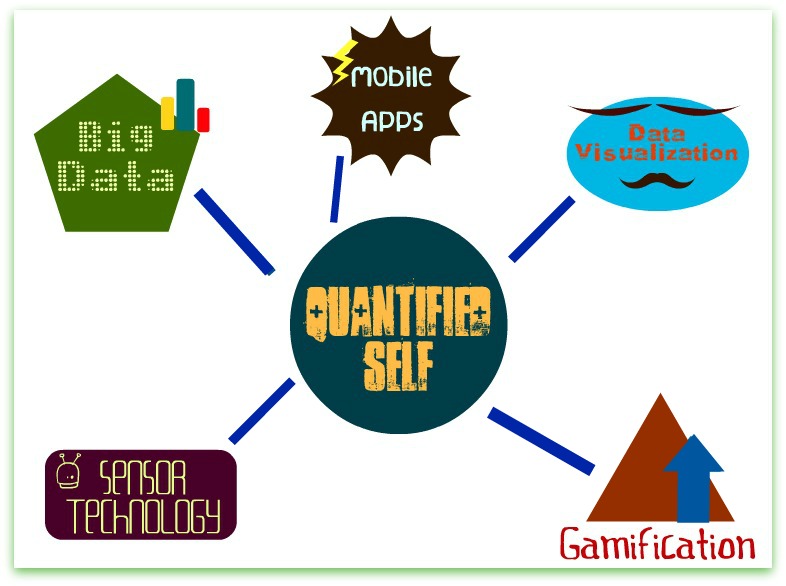
Before the dust of Quantified Self 2012 (#QS2012) settles completely, I want to take a moment to reflect on an implicit question that I saw running throughout the two-day conference: If data empowers individuals, what kinds of information do and do not count as data? What kinds of information have value, and to whom?
The idea that data[i] empowers individuals was well-represented at both #QS2011 and #QS2012; indeed, it has been a consistent theme within Quantified Self from the group’s beginning. Last year at #QS2011, the question I observed coming up most frequently was the question of how to make that empowerment happen: “What do I do with all this data now that I’ve collected it?” The “how” question remained alive and well at #QS2012, but this year another question seemed to come up again and again (if in different terms): What kinds of information are valuable? What kinds of data “count”?
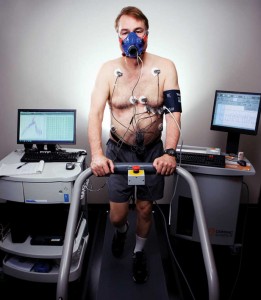
This new question was more often implied than stated directly, but it kept coming up—for instance, in the quiet tension between some of the featured show-&-tell presentations. On the one hand, there was Larry Smarr’s (@lsmarr) surprisingly entertaining talk [video link will appear here once available] about how he discovered his Crohn’s disease well before his doctors did. The moral of Smarr’s story was classic QS: don’t trust diet books, don’t trust your doctors, and don’t trust how you feel. You can’t know for certain that you’re healthy unless you “actually measure,” by which Smarr meant ‘measure with laboratory tests’—and in his own case, quite a lot of them (most of which he ordered, and paid for, himself). In Smarr’s case, the data that was valuable to him was produced by laboratory technicians who performed tests on Smarr’s blood and stool samples. Smarr was empowered by interpreting this data himself, with the help of scientific journal articles (and later, a sympathetic gastroenterologist). “Doctors should be asking, ‘What are your numbers?’ not ‘How do you feel?’” Smarr said. “The idea that you can feel what is going on with you is so epistemologically incorrect.”
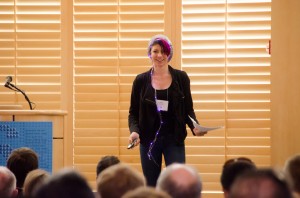
On the other hand, a major theme of #QS2012 was mindfulness—the idea that the awareness one develops through self-quantifying may be as beneficial as (if not more beneficial than) the collected data itself. In another show-&-tell presentation, Nancy Dougherty (@nancyhd) explained [video link will appear here once available] that simply tracking her emotions had changed her emotions for the better, and that it was through emotion tracking that she discovered mindfulness. As a result, she designed a device to reflect her moods back to her in the moment as well as log data for her to analyze later.
Similarly, Alan Greene (@drgreene) described a patient encounter with a young boy who, though blind since birth, could tell that Greene was smiling at him—and was moved to tears by it. Greene was moved by the interaction as well, and became inspired to start cultivating his own intuitive sense of other people’s emotions. After a few months of practice, he found that by carefully observing his own emotions both immediately before and immediately after entering an examination room, he could do a pretty good job of figuring out how his patients were feeling. In his experience, being able to say not just “How are you feeling today?” to his patients, but “Seems like you’re feeling tired today,” had resulted in better doctor-patient relationships (and perhaps better treatment outcomes).
Alexandra Carmichael (@acarmichael) had said while introducing Dougherty’s talk that, “QS is a very mindful community,” and several of the #QS2012 attendees I spoke with over the weekend readily concurred; some QSers even cited mindfulness as the primary benefit of self-quantifying. In one session I attended, a young man said that—although he hadn’t believed it when more experienced self-quantifiers told him this would be the case—he’d found that all the positive changes he’d made through self-quantifying came from developing mindfulness. With what seemed like a tinge of chagrin, he that admitted that hadn’t learned much of anything from pouring over his self-tracking data in and of itself.

The most interesting discussion in this vein, however, happened during Yuri van Geest’s (@vangeest) session, “Psychological and social-cultural consequences of QS going forward.” Van Geest mentioned that GPS devices have been posited to weaken people’s sense of direction, and asked the crowded room, “If you outsource your awareness to technology, do you risk losing your intuition?” One woman responded that she was a patient at a fertility clinic, and as such was now engaged in extensive self-quantifying as part of her efforts to conceive. She’d found that self-tracking had actually strengthened her ability to tell when she was ovulating, but she had a different problem with technology: when her ‘mindfulness’ about her body indicated she was ovulating, but the ovulation predictor tests provided by the clinic indicated she was not, the clinicians sided with “the stick.”
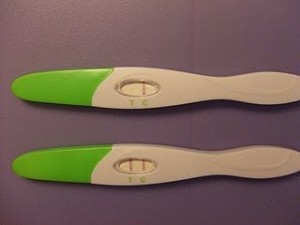
Each and every time the woman insisted the clinic run additional tests, however, ultrasound imaging showed that she was indeed ovulating: it was the woman who was correct, not the stick. Despite this, the clinicians continued to privilege (so-called) objective, quantified device-knowledge over her meticulously tracked but more qualitative self-knowledge until an expert (the clinician) and another device (the ultrasound machine) produced device-knowledge that validated the woman’s self-knowledge. Her problem then was not that technology (the stick) had weakened her intuition, but that technology “interfered with [her] ability to communicate with the clinic.” Put simply, the stick spoke more loudly than she could—and as a result, the quantified self-knowledge she produced by using the stick disempowered rather than empowered her in her relationship with the clinicians.
Later that afternoon in the closing plenary [video link will appear here once available], Kevin Kelly (@kevin2kelly) stated that, “information that can be quantified can be shared with others.” (Kelly, of course, takes ‘sharing with others’ to be a good thing, because it is only through pooling data into a vast “data commons” that revolutionary breakthroughs in healthcare and self-care will be achieved.) I thought about The Woman vs. The Stick, however, and came to a somewhat different conclusion.
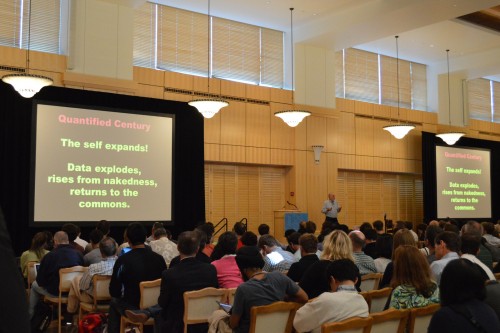
Yes, quantified (device-gathered) (laboratory-produced) data can be shared with other people. But qualitative or observational data can be shared with other people, too. The ease or difficulty of sharing data with other people is not an inherent property of the type of data; rather, it is a function of social and cultural ideas about what kinds of information are valuable or trustworthy. Remember: claims about ‘truth’ are always claims to power. The difficulty of sharing non-quantitative data has little to do with the data sets themselves, and has much more to do with our dominant epistemologies; it is not that some types of data can’t speak, but that some people in power refuse to listen. The problem isn’t the data; the problem is the people.
I think some of these perspective differences within Quantified Self stem from the different reasons people get into self-quantifying. Perhaps some who begin self-tracking because of a serious medical illness are more likely to privilege test-produced knowledge, while others who begin self-tracking out of curiosity or for general self-improvement might be more willing to privilege experiential, intuitive, or qualitative self-produced knowledge. This is just an initial hypothesis, and I’d be interested to know if others have different ideas. In any case, the latent tension between the “don’t trust how you feel, that information will lead you astray” and “develop an awareness of how you feel, this information is critically valuable” messages within Quantified Self are something I’ll be paying attention to as I go forward with my research.
Whitney Erin Boesel (@phenatypical) co-hosted the breakout session at #QS2012 for academics doing research within the Quantified Self community, and is looking forward to #QS2013 in Amsterdam next May!
Larry Smarr photo from http://www.technologyreview.com/featured-story/426968/the-patient-of-the-future/
Nancy Dougherty at QS2012 photo by chloester from http://www.flickr.com/photos/etherealdawn/8005050083/sizes/h/in/pool-2071709@N20/
Person or data image from http://siliconangle.com/?angle=silicon&link=topstory
Ovulation predictor tests photo from http://www.mybabydust.com/2010/07/ovulation-predictor-kits/
Kevin Kelly at QS2012 by spacetess from http://www.flickr.com/photos/spacetess/7997805629/in/pool-qs2012/
[i] USAGE NOTE: I’m aware that “data” is supposed to be a plural noun (not a singular one); I’m also aware that language is constantly evolving. A number of mainstream journalism outlets have decided to let singular “data” stand, and—though as a former writing major, I’m tempted to insist that data is and forever will be plural and plural only—I’ve used it here as a singular noun throughout in order to reflect what seems to be correct usage within the QS community.

Comments 12
Vanessa Naylon — September 20, 2012
Great wrap-up. You covered so much. I missed Yuri van Geest’s talk — it's fascinating. Thanks!
This week in lifelogging: What happened at QS conference, QuantifiedAwesome and Evernote Food | Memoto Blog — September 21, 2012
[...] Read the post on The Society Pages. [...]
Conference Notebook: How Thinking about Habits Inspired Me | BrandFiller — September 21, 2012
[...] The Woman vs the Stick: Mindfulness at Quantified Self 2012 by Whitney Erin Boesel [...]
atomic geography — September 22, 2012
Interesting post.
I do though wonder about the use of the word "mindfulness". It's used in so many contexts with so many different definitions and conotations that I think some extended discussion of how one is using it is worthwhile.
I found the working definition you provide kinda unsatisfying:
"the awareness one develops through self-quantifying may be as beneficial as (if not more beneficial than) the collected data itself"
How is the mere collection of data beneficial? Even the most mundane, practical applications have as their purpose an effect on awareness.
Alternately, I think you can develop the issues you identify without ever using the word "mindful" quite well (except maybe to state that some self quantifiers do use the word).
The Woman vs. The Stick: Mindfulness at Quantified Self 2012 | Flash Politics & Society News | Scoop.it — September 24, 2012
[...] “Mindfulness” may be Quantified Self’s best-kept secret. [...]
The Woman vs. The Stick: Mindfulness at Quantified Self 2012 » Cyborgology | The Sociology of the Quantified Self | Scoop.it — September 29, 2012
[...] [...]
» The Quantified Self Movement is not a Kleenex blog.castac.org — March 26, 2013
[...] accepts the authority of numerical data in all circumstances (a myth nicely debunked here). Kanyi Maqubela sees a lack of diversity in “the quantified self.” On one hand, he is [...]
Difference Without Dualism, Pt 2 (of 3) » Cyborgology — March 29, 2013
[...] friendship or how we feel about our own past selves, and about the complex relationships between technology and subjective experience within the Quantified [...]
The Missing Trackers? » Cyborgology — May 10, 2013
[...] please let me know if you have) is fertility tracking. This was first brought to my attention by a woman I met at #QS12, who was tracking her ovulation and menstruation as a fertility patient trying to conceive—but [...]
“Don’t Life Log Me” – Quantified Self 2013 in Amsterdam | Technology, Innovation, Education — May 12, 2013
[...] The Woman vs. The Stick: Mindfulness at Quantified Self 2012 [...]
What is the Quantified Self Now? » Cyborgology — May 23, 2013
[...] the focus had shifted: as I wrote at the time, the overarching theme of that conference was mindfulness. Many people still wanted to make objective (“objective”) sense of their self-tracking data, of [...]
What is the Quantified Self Now?Quantified Self — May 26, 2013
[...] the focus had shifted: as I wrote at the time, the overarching theme of that conference was mindfulness. Many people still wanted to make objective (“objective”) sense of their self-tracking data, of [...]